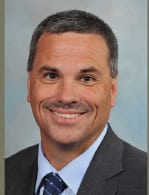Generating companies have different challenges topping their lists for the coming year, depending on their service territory—from integrating renewables, to responding to several new federal regulations, to anticipating variable natural gas prices. All, however, are confident their companies have the flexibility to respond to the changes ahead.
In mid-November, members of the POWER Generating Company Advisory Team responded via email to the following set of questions. Their comments have been edited for style.
Our 2015 Generating Company Advisory Team
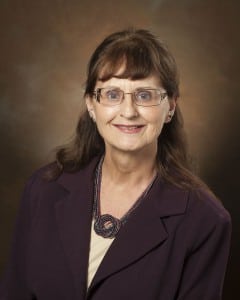
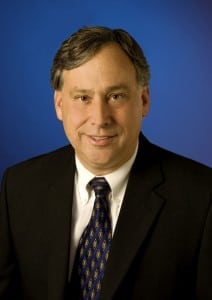
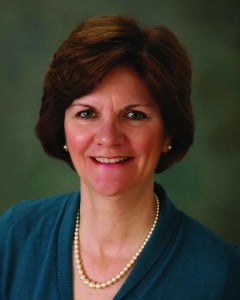
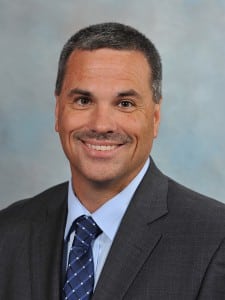
POWER: What changes in your fleet’s operations do you foresee in the next year or so that may not have been anticipated even five years ago?
Melanie Green: Overall, I do not foresee major shifts in how we operate our generation fleet. We continue to see a growing demand here in San Antonio and are well positioned to provide service to our customers. The one variable that could most impact our generation plan is the price of natural gas. This may effectively change the order of dispatch on our units. However, we continue to invest in our assets to ensure our ability to meet the needs of our customers.
Randal S. Livingston: With a historic shift in the quantity of solar and wind energy in the California Independent System Operator (CAISO) resource mix, we are already seeing dramatic changes in operations of our system. CAISO has been experiencing large ramping requirements and rapid and volatile swings in intermittent generation production. This is expected to increase as more intermittent generation is added to its systems.
Our more flexible resources such as hydro and natural gas resources have shifted their classic generation profile to back down in mid-day, during peak solar output, and then ramp dramatically toward our system peak in late afternoon as the solar generation declines. The addition of more intermittent resources in our mix means other resources must be reliably standing by in case they don’t materialize or possibly increase or decrease generation more on short notice. The CAISO system experienced many more hours of negative prices in 2014.
Finally, our pumped storage facility is actually pumping during the day rather than in the low-demand, off-peak hours, causing us to reexamine transmission capabilities to support this.
All this means that we’re working to rapidly build more flexibility into our system. Modifications to reduce start times, frequency of starts and stops during the day, improving ramp rates, or reducing minimum load are being examined. Our reciprocating engines received emission modification allowing for lower minimums. By next year, our solar photovoltaic facilities will be capable of being ramped down and participating in California’s day-ahead and real-time markets, and our hydro systems, despite their already high degree of flexibility, will be looking to further expand their capabilities.
Sharon Pfeuffer: In the coming year, it will be Mercury and Air Toxics Standards (MATS) compliance. Several units will be moving into compliance with the 2015 requirements. The remaining coal-fired units with an extended deadline of April 2016 will be working on installing dry sorbent injection (DSI) and activated carbon injection (ACI) systems. Testing we did just a few years ago showed us that these technologies are effective in controlling mercury and acid gases. At the same time, as we plan for the eventual retirement of those same units, we are accelerating our plans to build simple and combined cycle gas-fired generation.
T. Preston Gillespie, Jr.: As we think about 2015, it’s important to recognize that the utility industry is in a stage of transformation driven by historically low natural gas prices, rising environmental compliance costs, anemic load growth, and technology innovations. By 2015, Duke will have retired nearly 6,800 MW of older coal and large oil-fired capacity replaced primarily with low-cost, and lower-emitting natural gas. We have also invested more than $2.5 billion in commercial wind and solar since 2007 and more than $7.5 billion in environmental controls.
Technology continues to evolve, and we anticipate a continuing trend regarding the impacts associated with net metering and the introduction of improved batteries and other energy storage devices.
How much is renewable generation at the building and community level affecting your company’s demand trends?
Green: We continue to work with the community and stakeholders to further develop opportunities for increased renewable generation in our service area. We see a strong interest by our customers to participate in these programs. We are working to achieve a robust renewable portfolio as part of our plan to offset the need for new generation. This is a strong component of our New Energy Economy. To date, CPS Energy has been able to utilize the existing renewable resources in our service area to the benefit of our customers. We also have developed a robust demand response program that is called upon to offset summer peaks.
Livingston: This trend is significant. Distributed generation (DG) is becoming a significant trend both in overall load forecasting, and also in our planning for the grid of the future. Two-way power flows on our distribution circuits, smart inverters, network upgrades, and smart grid implementation all have important implications from distributed generation. Electrical storage, customer demand response, and electric vehicle charging are important options to consider in either shifting demand to the periods of high solar generation or shifting generation to the peak periods.
Pfeuffer: We haven’t seen a significant impact on our demand trends. On the policy side of this discussion, we fully support customers’ right to own and operate renewable distributed generation to serve their energy needs, but not cross-subsidies in our rates that allow DG-owning customers to avoid paying their fair share of fixed costs. We believe there are several modifications to net metering policies that could help correct the inherent unfairness and ensure that net metered DG customers pay fairly for utility services and energy and are compensated accurately for the value of the generation they produce.
Gillespie: Renewable generation at the residential and commercial level is still small for Duke Energy. It’s only 4% of our total solar portfolio. We are finding greater success with large-scale solar and feel it’s the most cost-effective way to integrate renewable energy onto the grid. We will soon begin construction of three of the largest solar facilities on the East Coast. However, one of the issues we are starting to address is how much we pay for excess distributed generation like rooftop solar coming into our grid. Paying full retail price does not account for the costs associated with transmitting and distributing the power and having backup generation available. We are working with our regulators to reach a stable and equitable approach.
Your companies all own at least some nuclear capacity. Recently, five U.S. units have been slated for retirement or shut down, mostly for unexpected reasons. How important will nuclear be to your company’s portfolio in the next 5, 10, 20 years?
Green: We anticipate that nuclear will continue to be an important part of our fuel diversification strategy. Nuclear has been, and is expected to remain, a low-cost, zero-carbon baseload option.
Livingston: Our nuclear facility has been an important part of our customers’ energy supply for decades, and runs superbly. We expect it to be an important part of our supply in the foreseeable future. That said, we continue to evaluate all of our assets to ensure they best meet our customers’ needs.
Pfeuffer: We own a single nuclear unit. Fermi is very important to our future capacity and generation. With all of the environmental regulation impacting coal, and the unpredictable nature of renewables, we are investing in that site to ensure its continued reliability as a key part of our generating fleet.
Gillespie: Nuclear generation will remain a key component of our energy portfolio over the next 20-year horizon and beyond. Nuclear power is a success story for Duke Energy—our 10,600 MW of nuclear generation have provided reliable, economical, emissions-free generation in our service areas for more than four decades. With the prospect of regulations restricting greenhouse gas emissions, the only way our country is going to meet these lower emission goals is to maintain and possibly expand nuclear generation.
We have two proposed new nuclear power plants (two units each) in the licensing pipeline. All of our operating plants are running well and have obtained renewed licenses, and we are evaluating the possibility of operating our nuclear units through an additional renewal period (to an 80-year life).
What recent or anticipated federal regulations do you expect will have the greatest effect on the fleet you’re responsible for in the coming year?
Green: Obviously, the Clean Power Plan is high on our list of regulations to monitor. We have aggressively participated in the comment period and engaged others in developing an appropriate response to the proposed rule. We are encouraged by the final form of 316(b) and believe that, working with our state regulators, we will be able to develop an effective compliance plan. The effluent regulations appear to have the most potential to significantly increase power cost due to the high cost of compliance.
Livingston: For us it’s 111(d) and National Oceanic and Atmospheric Administration fisheries implementation of salmon and steelhead recovery under the Endangered Species Act.
Pfeuffer: In the coming year, it will be MATS compliance—getting our DSI and ACI systems installed and operational. Our plants have the extended deadline of April 2016.
Gillespie: The Nuclear Regulatory Commission’s post-Fukushima requirements will have the greatest impact on Duke’s nuclear fleet.
In addition, Duke expects to spend $5 billion to $6 billion over the next 10 years on environmental regulations issued by the Environmental Protection Agency (EPA). Significant regulations include EPA’s recently finalized Section 316(b) rule that regulates cooling water intake structures. This rule will affect all of our thermal power plants, particularly those without cooling towers. Intake modifications are expected at 15 of our 32 stations that are affected by the rule. EPA’s proposed rules regulating Coal Combustion Residuals as well as Steam Electric Effluent Guidelines will also be significant for Duke’s fleet. Those rules are expected to be finalized in 2014 and 2015 respectively.
We’re also actively participating in the rulemaking process for EPA’s proposed regulation for greenhouse gases from existing plants. That rule is expected to be finalized in June of 2015 and is not included in the cost estimate above.
If the Clean Power Plan is finalized in 2015 and contains most of the same details as the proposed plan, how do you anticipate it will affect your assets?
Green: Implementation of the Clean Power Plan in its current state would lead to a reduction in coal generation and a corresponding shift to more natural gas generation. It also will lead to an increased emphasis on maximizing the benefit of renewables. The current asset make-up for CPS Energy, with more than 70% of our capacity from nuclear, gas, and renewables, provides us with some options to begin addressing the compliance requirements.
Livingston: PG&E already operates one of the cleanest generation portfolios of owned and contracted resources in the country. Over 60% of our generation mix comes from non-emitting sources.
Pfeuffer: If the final plan is similar to what has been proposed, it will be the most significant piece of environmental regulation ever imposed. The proposed plan has an aggressive front-loaded schedule for full compliance by 2030. We are still working through how we would comply, while still maintaining reliable and affordable generation for our customers. In any timetable, 111(d) will cause the retirement of many or most of our coal assets, and additional build of renewable wind and gas-fired generation.
Gillespie: It is too soon to tell. Once the rule is finalized, states will have between one to three years to develop a compliance strategy, and the path they will take is unclear at this time. It is early in the rulemaking process, and a lot can change.
The global power industry is becoming more concerned about water availability and quality. Is your company addressing water constraints now or preparing for any in the future?
Green: CPS Energy has maintained a strong sense of conservation, particularly around water use. The power plants use a lot of water in the once-through cooling process. San Antonio’s primary source of water is from underground water storage aquifers. In the 1960s, CPS Energy minimized the use of aquifer water by using treated sewage effluent to provide make-up water for the cooling lakes at the plants. To date, CPS Energy has saved more than 300 billion gallons of Edwards Aquifer water by using recycled water for plant needs.
Livingston: Absolutely. All of our owned fossil resources already use dry cooling that uses just 3% of the water that a conventional cooling tower plant would use. We just experienced the third year of low snowpack and rainfall, and last season was the third-driest in history. So we are carefully planning reservoir elevations, and in-stream flow releases so that we can carry sustainable stream flows through the dry summer months. We are also carefully conserving domestic water use at all our facilities across the company and helping our customers to do likewise.
Pfeuffer: Only one of our generating facilities is located in an area where water resources are constrained, representing less than 1% of our total generating capacity. The majority of operations take place in Michigan, which has an abundance of high-quality freshwater. Although there are factors that can negatively affect this resource (such as invasive species), the Great Lakes are believed to be a valuable source of freshwater for many years to come.
Gillespie: Water is a critical resource to Duke Energy and the communities we serve. Rivers and reservoirs serve as the backbone of our generation fleet by providing hydropower and cooling water for our nuclear and fossil plants. As part of being a good environmental steward, we use models that quantify water needs/use and quality during both normal and drought conditions, and work with stakeholders to ensure our impact on this shared resource is minimized. Additionally, we continuously evaluate new technology that will allow us to use less water in generating electricity.
In a word—followed by a one-sentence explanation—how do you feel about your utility’s portfolio as you anticipate its operation in 2015?
Green: Confident. CPS Energy is fortunate to have a diverse blend of generation that will enable us to continue to provide low-cost power to our customers.
Livingston: Challenged. But still optimistic. There are a lot of new dynamics being introduced to the grid and generation mix, but I believe we’ve got the right things in place for 2015. Hydro availability will be a key factor for us in California.
Pfeuffer: Transition. Continued focus on reducing customer cost, addition of DSI/ACI systems, and adding to our gas-fired plants and renewable wind fleet are all transitions from how we’ve operated in the past.
Gillespie: Economical. Our mix of energy sources provides a good foundation of predictable, low-priced electricity.
Let’s shift to the people who produce the power. As more of the Baby Boom generation transitions to retirement and you add younger employees, do you find they are less interested in thermal plants than renewable generation? If so, what strategies have been effective in recruiting younger workers to your traditional generation facilities?
Green: We have long recognized the challenges of recruiting new engineers to our conventional, fossil-fired generating plants. We recruit locally and are fortunate to have engineering graduates in the San Antonio area. We sponsor a number of college students as interns each year and have been able to retain some as full-time employees. CPS Energy also has a program that brings high school students interested in pursuing careers in the energy industry into the workplace. They receive scholarships and are afforded the opportunity to gain relevant experience.
Livingston: It’s the diverse resource mix of our portfolio that’s attractive. We have the latest technology in our thermal plants, our hydro has both environmental and heritage aspects that are appealing and unique, our solar assets have a new and unique character that attracts talent, and the quality of our nuclear operations helps attract top talent. I also believe our newer employees view themselves as joining the overall company, not just the generation department, and we are able to offer a unique and diverse career path for early career path employees.
Pfeuffer: Based on what is published in the mass media, we do get a lot of questions about jobs in renewable generation. However, fossil generation employs many more people per megawatt than renewables, so most of our hiring continues to be in that area. For our engineering positions, we have a lot of co-op and summer intern positions, and the students who work in those areas seem to enjoy the work and want to come back.
Gillespie: We have no real issues recruiting technical talent. An area where we are finding it more difficult to attract talent and experience is in the trades. We do see that retention rates may be changing, though.
How would you describe the level of awareness, training, and response of your plant staffs to both cyber and physical security threats?
Green: I believe we are well prepared for both cyber and physical security events at our plants. We have developed comprehensive programs to ensure that our employees are trained and aware of the possibility that cyber and physical security incidents may occur and how to respond correctly.
Livingston: I can definitely say that all of us here at PG&E have a much heightened sense of physical and cyber security awareness. Training and practical/world event experience have all had a hand in awareness and response readiness.
Pfeuffer: The physical security threat facing the utility industry, in general, is that of an insider—a highly motivated independent actor who has knowledge about and access to critical infrastructure. Our biggest cultural issue is change; people are reluctant to enforce a requirement today when yesterday that person could freely walk in. In this vein, over the last year, we have undertaken a project to improve background checks for employees, contractors, and vendors; reevaluated our physical security posture; and exercised resiliency plans in the case of a successful attack.
We do have significant training requirements based on regulations at specific plants—for example, plants governed by MARSEC (Maritime Security) and NERC CIP (North American Electric Reliability Corp. Critical Infrastructure Protection) standards have additional training and physical security requirements.
Gillespie: Our security force maintains a high level of awareness and routinely trains/drills to demonstrate that awareness.
Aside from technical knowledge, what one attribute or character trait is most important for today’s power plant workers?
Green: Passion. Merriam-Webster defines passion as “a strong feeling of enthusiasm or excitement for, or about doing something.” As discussed earlier, fossil generation is not often considered as a career option. We utilize several programs to attract interest and create opportunities. However, it is imperative that, as owners and operators of fossil generation assets, we recognize that today fossil generation units are the workhorse and backbone of the electric industry. We need to encourage excitement, ownership, and passion about the generation industry.
Livingston: Teamwork and a questioning attitude. We really need teams that can bring diverse skills and perspectives together.
Pfeuffer: Flexibility. As our generation mix changes and our jobs change, flexibility in how we think, work, and solve problems will continue to be a key attribute.
Gillespie: The ability to be a team player.
What keeps you excited about the power generation industry?
Green: New challenges and new opportunities. As we’ve discussed in this session, there are a number of new regulations on the horizon that will challenge the industry, but at the same time, they create opportunities for us to become more creative in how we produce and deliver energy to our customers. We also recognize that the existing fossil fleet is aging and are working to develop the appropriate strategy for repair vs. replace. All of this adds up to exciting times ahead!
Livingston: Constant change and challenge.
Pfeuffer: We are in a time of historic change in our industry. Henry Ford was a chief engineer in 1899 at the Washington Boulevard Power Plant, working on boilers and turbines that were smaller but fundamentally similar to the ones in the plants we run today. All of that will change in the next decade, as we see a rapid shift to gas-fired and renewable generation. This amount of change is a little scary, but also really exciting.
Gillespie: The challenge to create additional value from our generating assets—existing and new. ■
— Gail Reitenbach, PhD is POWER’s editor.








